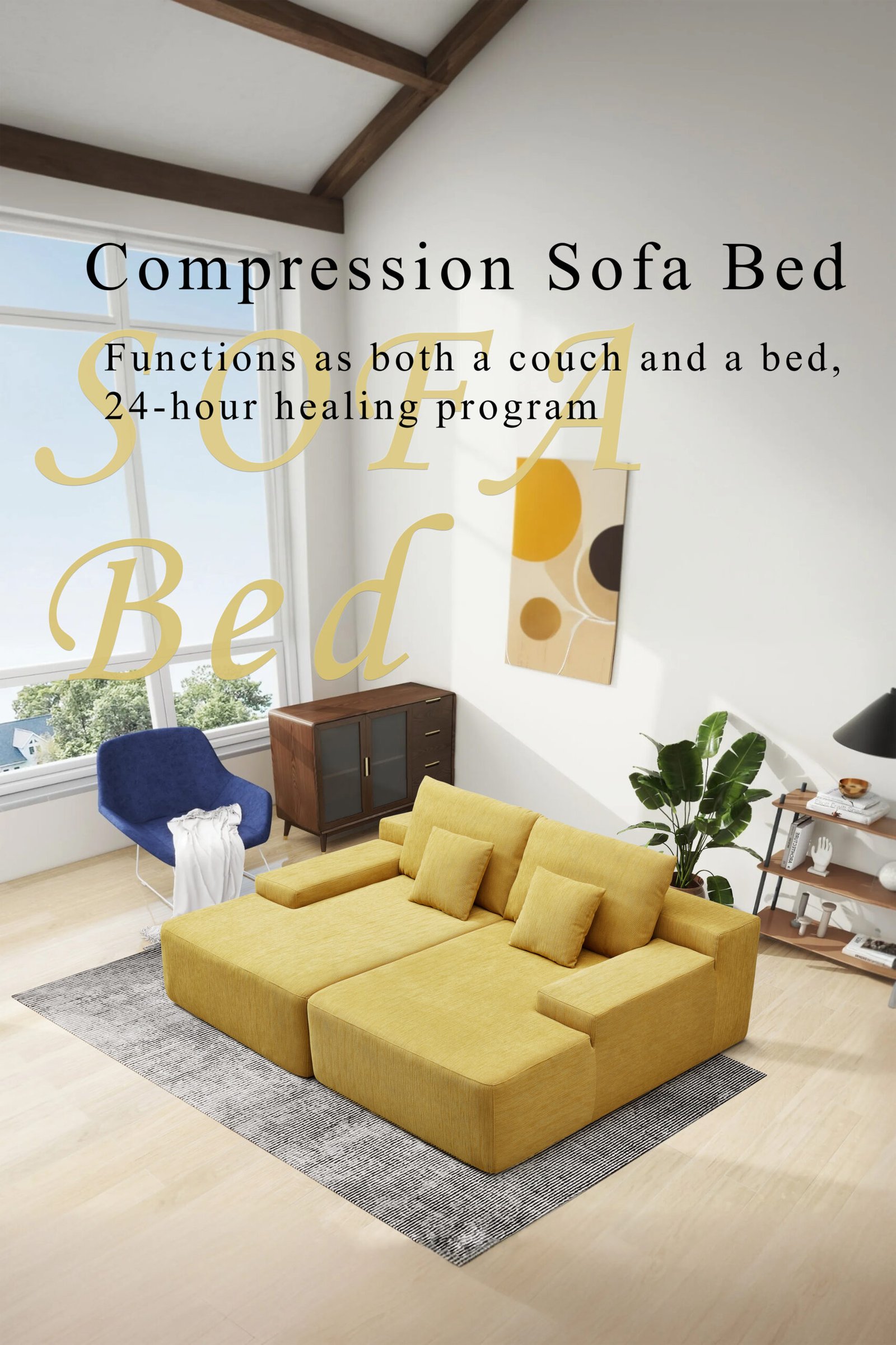
Moving is painful. Heavy, bulky furniture makes it worse. But compressed sofas can change the game.
Compressed sofas are vacuum-packed into smaller, lighter boxes, making them easier to carry, load, and unpack than traditional sofas.
Traditional sofa delivery is exhausting. I’ve struggled through narrow hallways, broken stair railings, and sore backs. But once I started using compressed sofas in my own business, moving became much smoother—for me and my customers.
What makes moving traditional sofas so hard?

Heavy lifting, tight spaces, and damage risks—these are the top challenges.
Traditional sofas are bulky and difficult to maneuver. They often require multiple people, special equipment, and careful planning to move.
These are just a few problems I’ve seen in the field:
- Weight: A standard 3-seater can weigh 100+ kg.
- Size: Most are over 2 meters long.
- Fragility: Exposed legs, armrests, and fabric tear easily.
- Inaccessibility: They often don’t fit in elevators or staircases.
Common Problems When Moving Traditional Sofas
| Problem | Description |
|---|---|
| Oversized dimensions | Can't fit through doors or stairways easily |
| Heavy lifting required | At least 2 movers needed for each item |
| Risk of damage | Corners and fabric get scratched or torn |
| Expensive logistics | Requires large moving trucks or special services |
In comparison, compressed sofas reduce or eliminate these pain points.
How do compressed sofas simplify moving?

Shrink the sofa, shrink the problem.
Compressed sofas are vacuum-sealed into smaller boxes that are easy to carry and move, even for one person.
This is how the process usually works:
- Compression: The sofa is vacuum-sealed and packed into a tight, rectangular box.
- Transportation: The small box fits easily in cars, vans, or elevators.
- Delivery: Easier to bring through hallways, stairwells, or narrow apartment doors.
- Unpacking: Once opened, the sofa expands and regains its original shape.
- Assembly: Simple parts, with clear instructions and minimal tools.
Why It’s So Much Easier
| Traditional Sofa | Compressed Sofa |
|---|---|
| Requires multiple movers | Can be carried by one person |
| Doesn’t fit in elevators | Fits in most residential elevators |
| Risk of scratching or tearing | Packed securely in protective film |
| Heavy and hard to lift | Lightweight and easy to handle |
As someone who's handled logistics for hundreds of sofa deliveries, I can say: compressed sofas have cut moving time by at least 40%.
Can one person really move a compressed sofa alone?

Yes—this is one of the biggest game changers.
Most compressed sofa packages are compact and lightweight enough for a single adult to carry, even up stairs.
For example, our most popular model—a 3-seater roll spring sofa—comes packed in a 120x60x50cm box. It weighs around 40kg. That’s manageable for most people.
Even if a customer lives on the 5th floor of a walk-up apartment, they won’t need professional movers. That kind of flexibility saves time, money, and stress.
Real Story from My Business
One of our customers in Toronto needed to move into a downtown condo. She was worried about the freight elevator policy and moving fees. After switching to our compress sofa, she moved everything herself—with just a trolley. She even sent me a thank-you note!
This kind of convenience is especially valuable for:
- Students moving into dorms
- Young professionals in high-rises
- Elderly users who live independently
- DIY movers who want to avoid hiring trucks
What happens after the sofa is moved?

Moving is only half the journey. Setup is the next step—and compressed sofas make that easy too.
Once unpacked, compressed sofas quickly regain their full shape, and most models require only basic assembly.
There’s no complex installation or heavy lifting. Here’s what customers usually do:
- Cut open the vacuum packaging.
- Let the foam and springs expand naturally (takes 1-2 hours).
- Attach legs or arms (if required) with basic tools—sometimes even tool-free.
- Sit and enjoy.
This means a customer can move in the morning, unpack the sofa by noon, and be watching TV by evening.
Assembly Time Comparison
| Sofa Type | Average Assembly Time |
|---|---|
| Traditional Sofa | 2–4 hours (with tools) |
| Compressed Sofa (HSM) | 30–60 minutes |
We always include a user-friendly manual with diagrams. Some models even come with QR codes for video instructions.
Conclusion
Compressed sofas make moving faster, easier, and less stressful—perfect for modern living.